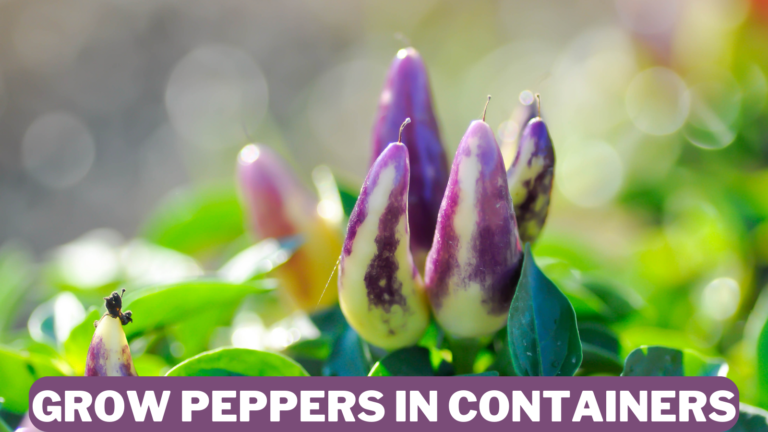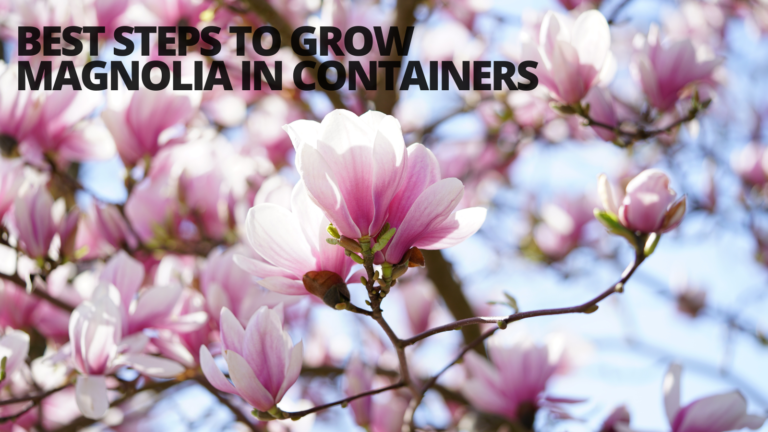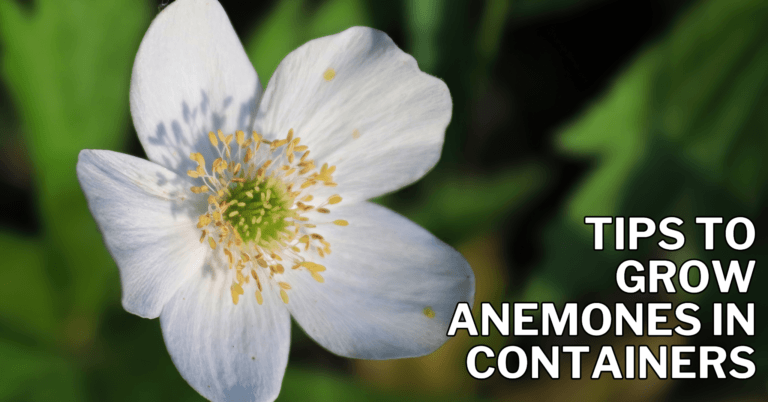How To Grow Pansies And Violas In A Container
How To Grow Pansies And Violas In A Container
Pansies are descended from violas. All pansies are technically violas, but not all violas are pansies. In the United States, violas are known as Johnny-jump-ups because they self-seed and can spread throughout your garden independently.
Pansies and violas are popular cool-season bedding plants in Louisiana gardens in the fall, winter, and spring.
Pansies and violas thrive in the excellent season's chilly nights and cool to mild days from November to April.
Winter's cold weather will not affect these plants even if temperatures drop into the teens. This article will share how to grow pansies and violas in a container.
History Of Pansies And Violas
The garden pansy (Viola wittrockiana) is a large-flowered hybrid plant commonly grown as a garden flower.
It is a hybrid of many species from the genus Viola's section Melanium (“the pansies”), particularly Viola tricolour, a wildflower native to Europe and Western Asia known as heartsease.
Viola tricolour var. hortensis is another name for it. However, the scientific designation is unclear. Viola tricolour var. hortensis Groenland & Rümpler is a synonym of Viola wittrockiana.
However, Viola tricolour var. hortensis DC is a horticultural variety of wild pansy (Viola tricolour without interspecific hybridization) that was shown in Flora Danica in 1777 before Viola wittrockiana existed.
The name “pansy” is derived from the French word pensée, which means “thought.” It was introduced into Late Middle English in the mid-15th century as a name for the flower Viola, which symbolizes recall.
The term “love in idleness” was coined to connote a lover with little or no other occupation than fantasizing about love.
The word “heart-ease” comes from St. Euphrasia, whose Greek name means “joyful mind.” The woman who refused to marry and wore the veil was considered a model of humility, hence the moniker “humble violet.”
In Scandinavia, Scotland, and German-speaking countries, the pansy (or its wild parent Viola tricolour) was known as the “stepmother.”
The name was accompanied by an etiological tale about a selfish stepmother, told to children while the teller plucked off corresponding parts of the blossom to fit the plot.
The pansy is known as flammola in Italy (Little Flame). The pansy is a short-lived annual or perennial that grows around 15 to 30 cm (6 to 12 inches) tall.
Oblong or oval leaves develop from the stems, while heart-shaped or rounder leaves sprout from the base.
The velvety flowers of the plant are roughly 2.5 to 5 cm (1 to 2 inches) broad and have five petals.
They commonly come in blue, yellow, and white combinations. The garden pansy prefers moist, chilly weather and rich soil.
Popular Varieties Of Pansies
Who doesn't enjoy a beautiful pansy? They're warm, vibrant, and lovely, and (best of all) they thrive in Colorado's climate!
Consider planting pansies in your garden if you want a flower to brighten it. There are numerous types to choose from; one may be better suited for your garden than the other.
Here's what distinguishes each of our favourite pansy varieties:
1. The Blotch Pansy
The blotch pansy is the most common pansy kind. The flowers' petals come in various bright colours, ranging from yellow to blue to red, and they all have a dark purple “blotch” on their faces.
They have small stems and grow close to the ground, resulting in vibrant splotches of colour peeping out among other flowers or just overground cover.
2. The Clear Pansy
Because they have no face and only one uniform hue, these pansies are known as “clear.” A Scottish grower developed them in the late 1800s, and they became the most popular flower in North America after being sold overseas.
The clear pansy is still prized for its beauty, transforming your flowerbed into a watercolour cutout.
3. The Mammoth Pansy
This enormous pansy was bred to stand out and be the focal point of your garden rather than just provide a hint of colour.
Its thick stems reach six to eight inches above the ground, and its roots branch out to easily fill a pot or a garden bed.
4. The Cat's Whiskers Pansy
The whiskers pansy is well named since it is visually interesting. Delicate, tiny lines resembling animal whiskers fan out from the center of its vibrantly coloured petals.
The spotted pansy was only found in open fields until recently when agriculturalists learned how to develop the design through hybridization.
This beautiful pansy variety is available as a medium-size flower. The flower sizes are 2 – 2½ inches, and they slightly vary depending on the colour.
The cat's whiskers pansy comes in many different colours, ranging from light blue, orange, and red-gold hues to purple-white, white, and yellow hues.
5. The Viola Tricolour Pansy
All pansies are linked to the viola flower, which has a long history of cultivation dating back to ancient Greece, where it was first utilized for medical purposes.
The viola tricolour pansy is one of the first pansy kinds.
It has many similarities to the viola but two notable differences: it developed from a single main stem.
It branched out above ground, whereas the viola branched below ground, and its flower is larger and rounder than the viola's.
“Heartsease,” “come-and-cuddle-me,” and “love-in-idleness” are just a few of the charming names for the viola tricolour.
6. Black Accord Pansy
These deep-black pansies have a vivid yellow heart and add an attractive touch to any garden. Plant them with chartreuse-coloured flowers or yellow or white pansies to create a striking garden.
7. Blue Mood Pansy
This pansy has a gorgeous yellow-gold core and is white with purple patterns. Their colours, also known as the Cool Wave Violet Wing, will brighten up your fall garden in a way that few other flowers can. They can reach a height of eight inches and a width of 30 inches, making them highly visible.
8. Wave Blueberry Swirl Pansy
This variety of pansy has white petals with lavender trim or solid yellow petals, and it can withstand cold conditions.
They have a delicate appearance and can withstand temperatures as low as -20 degrees Fahrenheit in the winter.
They are very productive and produce large amounts of flowers if you fertilize them every two weeks.
9. Freefall Purple Wing Pansies
These pansies are bright yellow with deep purple stripes. Due to their hardiness, they bloom virtually all year in coastal climates and from spring through summer in other areas.
10. Xl Victoriana Pansies
The deep purple and clean white blend of Freefall XL Victoriana creates the unmistakable happy face marking unique to pansies.
It blooms in a short amount of time and has a non-tangling habit. It is 4-6″ tall and has huge blossoms, ideal for hanging baskets and dramatic arrangements.
Steps To Grow Pansies And Violas In A Container
Wet feet bother pansies, as they do many perennials. Unlike other summer perennials, pansies thrive throughout the fall and winter, a wet season in much of the United States.
Because pansies prefer well-drained soil, gardeners in wetter climates may wonder if they can grow in pots.
1. Choosing The Right Container To Grow Pansies And Violas In A Container
First and foremost, when picking a container for pansies or violas, consider air movement and drainage.
Clay and concrete pottery are the greatest containers for air movement and drainage in the summer. Why isn't this a good option for fall and winter containers?
Water soaks into a clay or concrete container throughout the fall and winter. When the temperature drops below freezing, the water soaked into the pots' walls freezes and expands, cracking the clay or concrete.
A freeze-proof plastic, synthetic, or glazed ceramic container is a more practical alternative for a fall and winter container.
These containers will also allow adequate air movement and drainage for the winter, and they will be less likely to be destroyed by winter freezes.
The next phase in the procedure is determining the size of an autumn and winter container.
Pansies and most other fall and winter annuals have smaller root systems than spring and summer annuals, requiring less soil depth and width and less water.
Place a smaller container upside down in a large, deep container and fill it with large rocks or styrofoam chunks. Leave 4 to 5 inches of soil space for roots to grow in.
2. Drainage To Grow Panies And Violas
Wet feet and continually soggy or wet soil are pet peeves of pansies. Both can cause root rot and other plant illnesses. Once your plants have developed root rot, there's not much you can do to save them.
As a result, it's critical that your pots have drain holes and that you choose a potting mix that drains efficiently. If your container doesn't already have drainage holes, drill one with a diameter of ¾ inch.
3. Soil Requirements To Grow Pansies And Violas In A Container
It is recommended that pansies and other fall and winter annuals be grown in containers using a premium or professional potting mix.
Avoid using potting soils that cost a dollar a bag. Potting mixes distribute moisture more uniformly throughout the pot, allowing for adequate drainage.
They prefer fertile soil in the sun or part shade, so before planting, use a peat-free multi-purpose potting compost in pots and well-rotted organic matter in the ground.
Watering, feeding, and deadheading pansies regularly keep them looking beautiful and stimulate additional blossoms.
Potted pansy plants require well-drained soil, so make sure the potting mix is light and use a container with drainage holes.
Add some slow-release fertilizer to the potting mix as directed on the bag before putting your pansies in their new pots.
4. Sunlight Requirements To Grow Pansies And Violas
Pansies will tolerate moderate shade but want as much direct sunlight as possible. They should get at least 6 hours of direct sunlight each day.
They can be grown under deciduous shade trees because the leaves fall off to allow sunlight. Pansies can grow in full or partial sun, but they prefer cooler temperatures to grow.
The best planting location is in the morning sun while avoiding late-afternoon heat. The distance between plants should be 7 to 12 inches.
Pansies need about six hours of sunlight per day to thrive. In the hottest regions, keep plants out of direct sunlight during the hottest part of the day (Zone 7 and warmer).
They thrive in full sun to partial shade. Pansies can be used alone or with other bedding plants in borders.
They're also great for filling in barren spots. Because the bulbs grow up through and between the flowering pansies, they make ideal partners for spring bulbs like tulips.
5. Selecting Pansies And Violas
Choosing your pansies and violas is the most enjoyable part! They come in almost any colour. Not all violas and pansies are the same.
Choose the kinds that have a good track record in your area. The colours you choose are entirely up to you. However, there are a few factors to keep in mind:
Colours are generally divided into two categories: hot hues and cool colours. Red, orange, and yellow are vibrant colours that convey emotion and excitement.
To call attention to areas that could otherwise be neglected, use bright colours near doorways, paths, and far corners of the garden.
Cool hues like blue, pink, and purple are soothing and relaxing. They're ideal for usage in areas where you wish to unwind.
Colour can also be utilized to alter distance perspective visually. Warm colours and light tints, such as red, orange, yellow, and white, draw attention to an object or location.
When these hues and tints are used near a house's foundation, the house appears closer to the street.
Cool and dark colours, such as blue, green, and black, recede, making a house appear farther away from the street.
The next step is to use complementary colours. Using these in the garden can add to the drama.
Simply glance at the colour wheel and choose opposite-coloured hues to create a design with complementary hues. Complementary hues produce a lot of contrast and make both colours stand out.
Remember that bright shades of any hue appear better with brilliant shades of a complementary colour, and light shades look better with light shades. The flowers' colour should match the container's.
5. Time To Plant Pansies And Violas
Pansies can be planted early in the spring or late in the fall. Starting pansies from seed can be difficult; buying established plants from a local nursery is much easier. You'll also get blooms a lot faster.
However, for early spring and summer flowering, start pansy seeds indoors in late winter, 8 to 10 weeks before the last spring frost.
Alternatively, sow seeds in the late summer for fall and winter blooming. Pansy seeds can take a long time to germinate (typically emerging in anywhere from 1 to 3 weeks, depending on soil temperature).
When the ground is workable in the spring, plant pansy plants thrive in soil temperatures ranging from 45°F to 65°F (7°C to 18°C).
Pansies can withstand a light frost right after planting, but don't put them in the ground if the temperature is consistently below freezing.
6. Place To Plant Pansies And Violas
Plant in humus-rich, well-drained soil. For more information, see our articles on soil amendments and soil preparation for planting.
Pansies can grow in full or partial sun, but they prefer cooler temperatures. The best planting location is in the morning sun while avoiding late-afternoon heat.
The distance between plants should be 7 to 12 inches. They'll spread 9 to 12 inches wide and grow 6 to 9 inches tall.
7. Watering Pansies And Violas
After planting, soak the dirt in the pot thoroughly. Then, water is enough to keep the soil moist but not saturated.
If the weather is hot, pansies in containers may need to be watered twice daily. If in doubt, always inspect the soil. You should water if the top inch of the soil is dry.
Watering early in the day is preferable because it allows the leaves to dry, which reduces the risk of illness.
Wet feet bother pansies, as they do many perennials. Unlike other summer perennials, they thrive throughout the fall and winter, a wet season in much of the United States. Gardeners in damper climates may appreciate pansies' fondness for well-drained soil.
8. Fertilizer To Grow Pansies And Violas
I recommend using granular fertilizer for feeding plants. Pansies and violas prefer a specific sort of fertilizer containing nitrogen known as “Nitrate.” To be on the safe side, choose Pansy Food. Follow the feeding directions on the package.
Use a general all-purpose fertilizer to help your pansies grow. If you use a nitrogen-rich fertilizer, on the other hand, you may end up with more foliage than flowers.
Remove faded/dead flowers to encourage the plants to produce more blooms and extend the flowering season.
The traditional summer annual fertilization program — 200 ppm 20-20-20 or a slow-release/granular fertilizer—should work well for pansies for the rest of the growing season. Frost-damaged flowers and old, faded blooms should be removed first.
9. Propagate Pansies And Violas
Pansies can be grown from seeds. Through blossom from late spring to autumn, sow the seed under cover from February to April. Sow seeds from May to July to develop pansies for autumn and winter blooms.
9. Pruning / Deadheading Pansies And Violas
Deadhead pansies and violas growing in containers. This entails pinching or snipping the base of wasted flower stems.
This will keep your unkempt garden neat and encourage the growth of new flowers. If your pansies or violas get lanky, pinch the branches back by up to one-half their length, ensuring the remaining stem has some leaves on it.
A bushy plant is a healthy pansy. Pruning or trimming back aims to maintain the plant compact and full.
Elongated stems should be trimmed back by one-third anytime they appear, in addition to the early summer pruning.
Pests & Diseases Of Pansies And Violas
Fungal infections can generate spots and blotches on pansy leaves. The spots can be limited to the leaves solely, but they can also damage the stems or the plant's core.
To avoid importing disease into your garden, acquire healthy plants from a reliable supplier and inspect them thoroughly for signs of disease.
Pick the leaves off your pansies and throw them away if you find leaf stains. Because fungus spores can survive in the soil, avoid growing pansies in the same area the next year.
Conclusion
You'll need to plant violets and other members of the Viola genus in containers to grow them indoors.
Our guide to growing violets in pots includes detailed instructions on how to get them started in planters. If you have any problem growing pansies and violas in a container, feel free to ask here.
I trust you enjoyed this article on Growing Pansies And Violas In A Container. Please stay tuned for more blog posts to come soon. Take care!
JeannetteZ
>>>Please click here to read my all-inclusive article about Container Gardening<<<
>>>Are you interested in homegrown herbs and medicine? Please click here to find out more about it!<<<
Your Opinion Is Important To Me
Do you have thoughts, ideas, or questions? I would love to hear from you. Please leave me your questions, experiences, and remarks about this article on How To Grow Pansies And Violas In A Container in the comments section below. You can also email me at Jeannette@Close-To-Nature.org.
You might also enjoy these blog posts:
The Most Stressful Jobs In The World
What Is The Difference Between Stress And Depression
The Impact Of Stress On Your Body
Essential Gardening Tools And DIY Storage Ideas
























